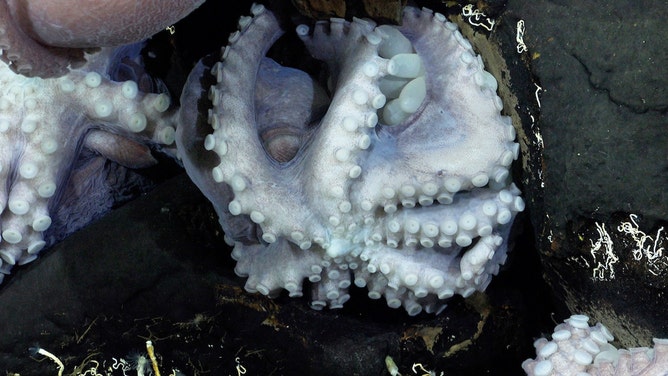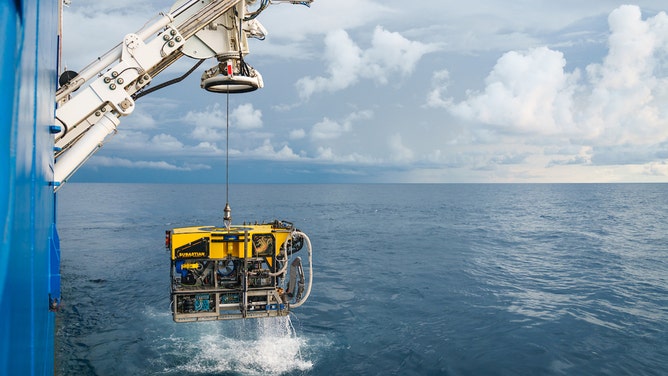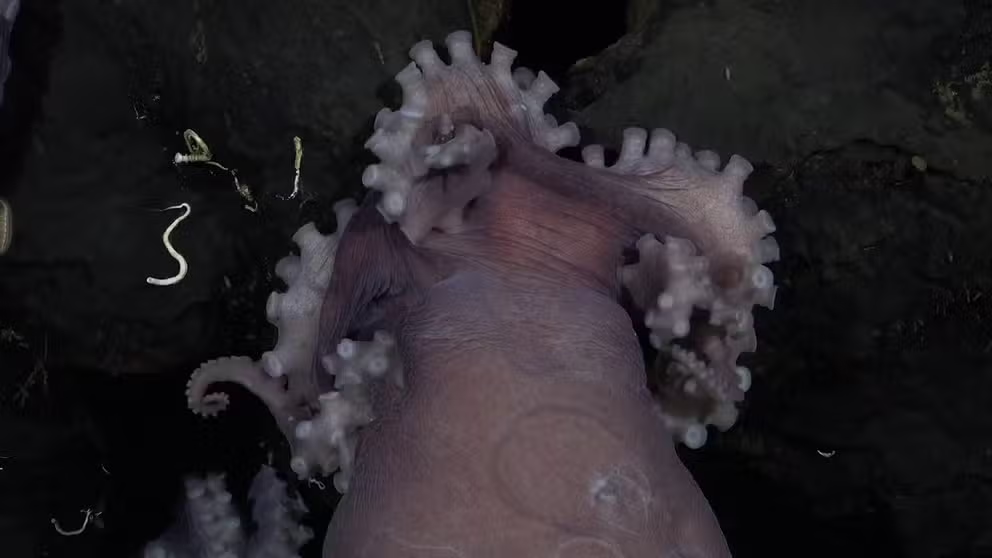Marvel at never-before-seen octopus nursery found off coast of Costa Rica
An international team of scientists recently explored previously unseen seamounts off of Costa Rica. What they found on their expedition was a new active octopus nursery and witnessed babies hatching.
Scientists discover world's third-known octopus nursery
A team of international scientists has discovered a never-before-seen octopus nursery off the coast of Costa Rica, making it only the third known nursery in the world, they said.
PUNTARENAS, Costa Rica – The world's third-known octopus nursery was recently discovered offshore of Costa Rica.
A team of 20 international scientists located the brooding site at a low-temperature hydrothermal vent. The team also proved that the first-known aggregation of deep-sea octopuses, the Dorado Outcrop, is an active nursery.
WATCH: TOURISTS DISCOVER MASSIVE PACIFIC OCTOPUS TWISTING INSIDE WASHINGTON STATE PARK

The biggest finding of the expedition is the confirmation that the small Dorado Outcrop in Costa Rica’s Pacific waters hosts an octopus nursery with hundreds of Muusoctopus species brooding viable eggs in low-temperature hydrothermal fluids.
(Schmidt Ocean Institute)
Scientists said they believe the octopi are potentially a new species of Muusoctopus, a genus of small to medium-sized octopuses without an ink sac.
The expedition also reinforced the idea that some species of deep-sea octopi seek out low-temperature hydrothermal vents for brooding their eggs, explorers said.
'Still so much to learn'
The Dorado Outcrop nursery astonished scientists when it was originally discovered in 2013. It was the first observation of female octopuses gathering together to brood their eggs.
The discovery of the recent low-temperature vent sites was difficult, according to Beth Orcutt with the U.S.-based Bigelow Laboratory for Ocean Sciences, who co-led the expedition with Costa Rican scientists.
'EPICNESS': FRIENDLY OCTOPUS HUGS DIVER'S CAMERA IN MEMORABLE, UP-CLOSE ENCOUNTER
During the 19-day research project, scientists also witnessed the species hatch, disproving the idea that the area is inhospitable for developing octopi young.
"The discovery of a new active octopus nursery over 2,800 meters (9,200 feet) beneath the sea surface in Costa Rican waters proves there is still so much to learn about our ocean," said Jyotika Virmani, Schmidt Ocean Institute's executive director.
The never-before-seen seamount is currently unprotected from human activities like fishing. Local scientists on the expedition said they are working to determine if the waters now warrant protection.
Meet ROV SuBastian
During the expedition, scientists used an underwater robot to observe the seamounts and baby octopuses.
"The deep-sea off Costa Rica rides the edge of human imagination, with spectacular footage collected by ROV SuBastian of tripod fish, octopus hatchlings, and coral gardens," Virmani said." We look forward to continuing to help the world witness and study the wonders of our incredible ocean."
ROV SuBastian is about the same size as a minivan and is depth rated to 4,500 meters. It is outfitted with a suite of sensors and scientific equipment to support data and sample collection, as well as interactive research, experimentation and technology development.

Remotely Operated Vehicle (ROV) SuBastian is lifted back on board Research Vessel Falkor (too).
(Schmidt Ocean Institute)






